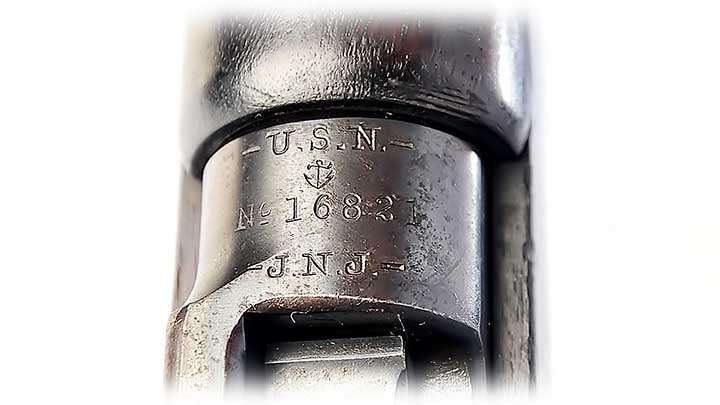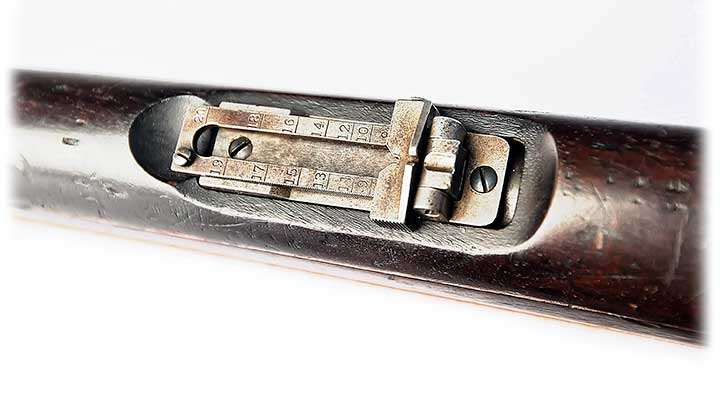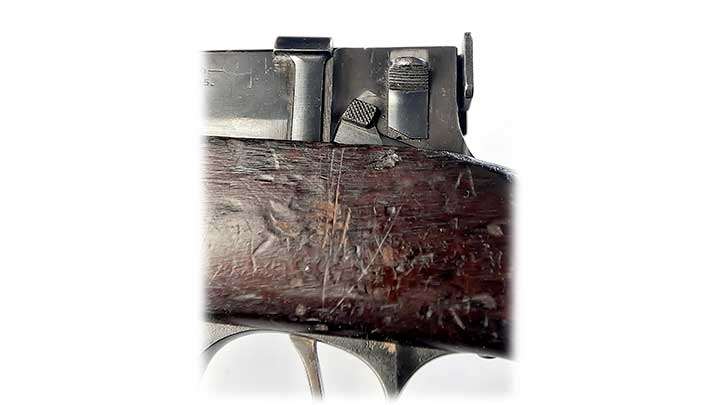
This article, "I Have This Old Gun: Model 1895 Lee Navy," appeared originally in the February 2015 issue of American Rifleman. To subscribe to the magazine, visit the NRA membership page here and select American Rifleman as your member magazine.
Considering the trends in U.S. military firearm technology during the 1890s, the country’s selection of a proprietary straight-pull rifle is extraordinary. In addition to its unorthodox action, the 6 mm Lee Navy was the smallest-caliber longarm ever officially issued to U.S. fighting men at the time of its adoption. The principal Army rifle at the time, the Krag-Jorgensen, was chambered in .30-40 Krag, and large numbers of .45-70 “Trapdoor” Springfields were still in service. The Lee Navy was also the first U.S. service rifle chambered for a U.S. cartridge designated by millimeters rather than inches.

Though the Winchester 1895 Lee Navy had a short life span, it did see action—most conspicuously in China’s 1900 Boxer Rebellion and also in Cuba and the Philippines during and after the Spanish-American War.
Arms inventor James Paris Lee (of Lee-Enfield renown) designed the arm to meet specifications outlined by the U.S. Navy. Unlike contemporary Swiss and Austrian straight-pulls, whose rotating bolts came straight back on the same plane as the action, the Lee rifle featured a camming arrangement that did away with bolt lugs; instead, the action was locked by a pair of shoulders milled into the rear portion of the bolt and the receiver.

A classic infantry-style arm of the time, the rifle featured a 47¾" overall length with a 28" barrel and 8-lb., 4-oz. heft. It could be fitted with an 8¼"-bladed knife bayonet.
The cartridge and cartridge-loading setup of the Lee were also unique. Employing a 112-gr. round-nose 6 mm (0.236") bullet, fixed into a smokeless-propellant-charged, bottleneck semi-rimmed case, its velocity was 2565 f.p.s and muzzle energy was 2,217 ft.-lbs. Five rounds were clipped into a slim charger and secured by a unique elongated wire locking lever. The loaded charger was inserted into the top of the magazine above the follower. Closing the bolt stripped off rounds, and when the second cartridge had been expended the charger dropped free through a hole in the bottom of the magazine. The Lee was adopted by the Navy in 1895 and manufactured by Winchester between 1896 and 1916. A total of 20,000 Lee Navys were produced.

Although the Lee Navy generally proved serviceable, it did have a few glitches. The gun’s cartridge, for which the Navy’s Model 1895 Colt/Browning “Potato Digger” machine gun was also chambered, created a bit of a cross-service logistics problem. Because it was a Navy/Marine specific arm, that could have probably been dealt with if there weren’t other difficulties. Most critically, it was found that the gun suffered excessive bore erosion due to the corrosive effect of the smokeless propellant. There were also complaints that the trigger and extractor springs were fragile, and the follower was weak at its hinge rivet. Concerns were also expressed that the open magazine well could collect dirt and debris, affecting the sear.
After much soul-searching, the Navy decided that it was probably best to retire the Lee Navy, and Krags were finally ordered for the Marines, only to be replaced shortly thereafter by 1903 Springfields. Still, Lees continued to be built and remained in stores for some time. Interestingly enough, Winchester felt the rifle had enough merit to warrant a sporting version, of which some 1,700 were sold commercially from around 1897 to 1916. The rifle shown here is in NRA Antique Excellent Condition, and as such is worth in the $2,350 to $2,750 range, according to the 40th Edition of the "Blue Book of Gun Values."

Gun: Model 1895 Lee Navy
Manufacturer: Winchester Repeating Arms Co.
Condition: NRA Antique Excellent
Caliber: 6 mm Lee Navy
Manufactured: 1908
Photos by Jill Marlow
Related Reading
Guns of the Spanish-American War 1898
U.S. Krag-Jorgensen: The Foreign Rifle
U.S. Springfield .45-70 Gov't. Trapdoor Carbine
Men & Guns of the 1900 China Relief Expedition
Lee-Enfield Rifle: Workhorse of the British Empire




































